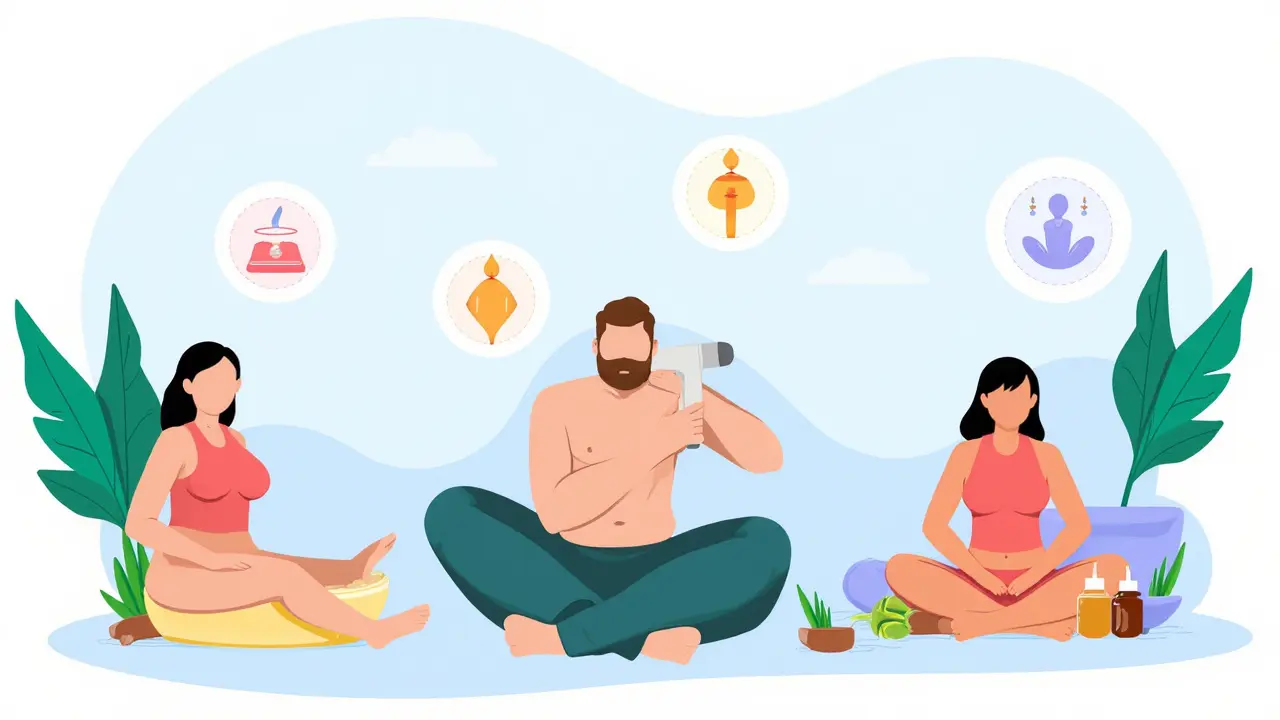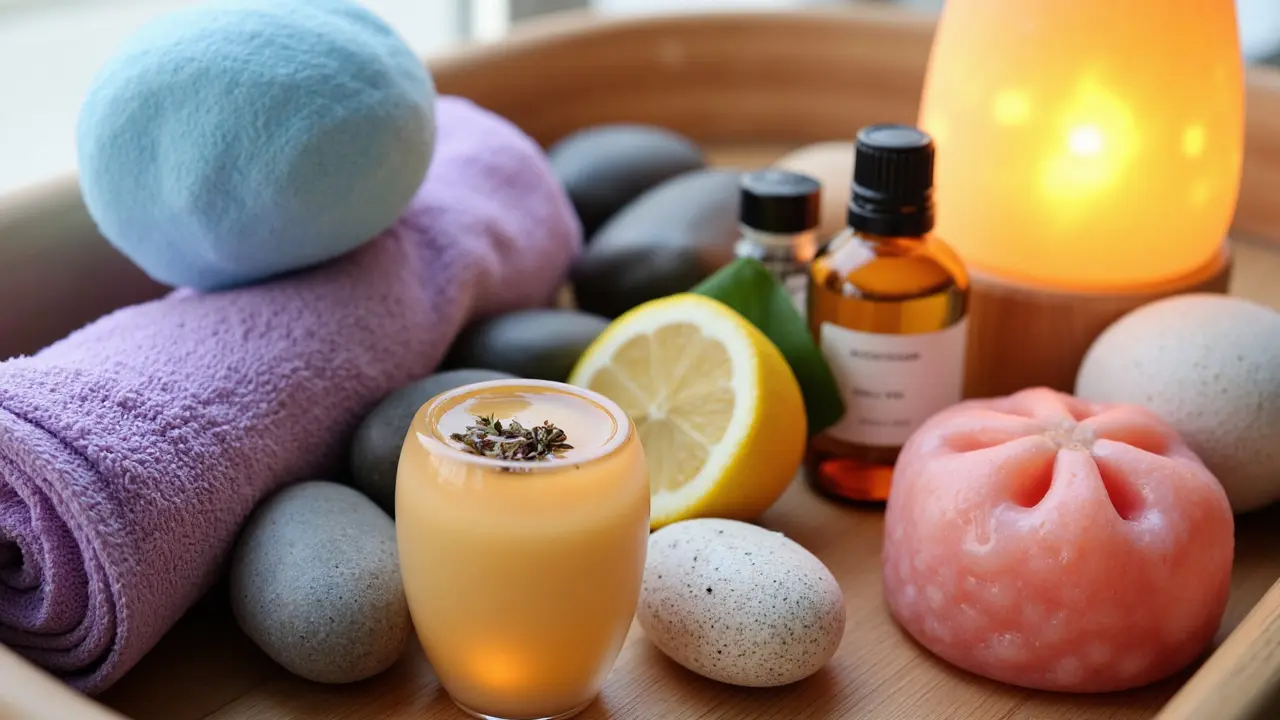Ever feel like your shoulders have more knots than a fishing line? You’re not alone. Nothing breaks the tension and melts stress like a solid body massage. We all know it feels good, but the real perks go way past just chill vibes—think better sleep, fewer headaches, and a mood boost you can actually notice. If you’ve never booked a session or just want the lowdown before you walk in, this guide covers what you need to know.
Let’s bust some common myths first: you don’t have to be fancy, super flexible, or even know the massage types to benefit. You just need to know what to look for and what fits your lifestyle and budget. Picking a good massage therapist or spa makes all the difference—trust me, you don’t want to roll the dice with your own well-being. I’ll walk you through how to spot a legit place, what to expect at your first visit, and how to make sure you get the most out of each session without paying extra for awkward or unhelpful add-ons.
- Why Body Massage Hits the Spot
- Best Types of Body Massage Near You
- How to Pick the Right Massage Spot
- What Happens in a Session
- Simple Safety and Booking Tips
Why Body Massage Hits the Spot
Ever wonder why a body massage can make you feel like a whole new person? The secret isn’t just in those relaxing strokes—it’s science. When someone works on your muscles, your body releases endorphins, which are the chemicals behind that happy, relaxed feeling. At the same time, it cuts down on cortisol, the main stress hormone most of us wish we could just kick out for good.
Regular body massage does more than take the edge off after a long week. It’s shown to help with chronic issues like back pain, headaches, and even trouble sleeping. In a 2023 study, people who got massages twice a month reported much lower stress and anxiety levels than those who didn’t. Not bad for an hour on a comfy table, right?
Here’s what really stands out when we look at the impact of body massage:
- Better circulation: More blood flow means your muscles and skin get the oxygen and nutrients they need.
- Less muscle tension: Knots and tight spots can loosen up, which is great for folks who work at a desk or hit the gym hard.
- Mood support: Even just one session can make you feel a little less cranky or wrung out.
- Boosted immunity: Research hints that massage can help your immune system work better by cutting stress.
Still curious about how these perks stack up? Check out this quick table showing some real data from clients tracked in a small clinic last year:
| Benefit | Clients Noticing Improvement (%) |
|---|---|
| Less Stress | 82 |
| Pain Relief | 76 |
| Better Sleep | 67 |
| Better Mood | 70 |
So, if you’re stuck in a cycle of stress, soreness, or restless nights, a good massage is more than just a treat—it might be one of the simplest ways to start feeling better, both in your body and your mind.
Best Types of Body Massage Near You
Choosing the right kind of body massage isn’t just about what sounds cool—it’s about what your body and mind actually need. Whether you want a deep muscle fix or just a gentle time-out, there’s a massage for you. Most spas and therapists offer a menu, but let’s break down the ones you’ll see everywhere and how to know which fits you best.
- Swedish Massage: This is the classic. Long, sweeping strokes that help you relax, boost blood flow, and send your stress packing. Perfect for beginners or if you just want to chill out without anything too intense.
- Deep Tissue Massage: Got serious muscle knots? Deep tissue targets those stubborn spots. It can feel intense, but it works wonders for desk workers, athletes, or anyone with real tension.
- Sports Massage: This is for the active crowd. It focuses on areas that take a beating, like legs and shoulders. It boosts flexibility and helps you bounce back after a workout or game.
- Hot Stone Massage: Heated stones slide over your skin and get deep into muscles, perfect if you love warmth and need under-the-surface relief.
- Aromatherapy Massage: Adds essential oils to the mix. These scents (like lavender or eucalyptus) can help you feel calm, energized, or even breathe easier.
- Thai Massage: No lotion, no lying still here. You’ll be stretched and moved around on a mat—think gentle yoga with some pressure applied. Great if you want to feel loose and limber.
- Shiatsu Massage: This Japanese style hits pressure points using just fingers, thumbs, and palms. If you’re nervous about oil or undressing, give shiatsu a shot.
If you’re lucky enough to be in a big city, you might spot specialized options like prenatal massage for moms-to-be, reflexology for foot pain, or even lymphatic drainage to reduce swelling.
| Type | Main Benefit | Who Should Try | Usual Duration |
|---|---|---|---|
| Swedish | Relaxation | First-timers, stress relief | 60-90 mins |
| Deep Tissue | Muscle pain relief | Sportspeople, chronic tension | 60 mins |
| Sports | Injury recovery | Athletes, active folks | 30-60 mins |
| Hot Stone | Deep warmth | Chronic tenseness, cold weather fans | 75-90 mins |
| Thai | Flexibility, energy | Anyone who likes stretches | 60-90 mins |
| Shiatsu | Pressure point relief | Fans of clothed massage | 60 mins |
More than 70% of regular massage clients try different types throughout the year depending on stress levels, injuries, and even the season. Not sure what to pick? Ask your therapist to explain what’s best for your goals. Don’t be shy—the more you share, the better they can help.

How to Pick the Right Massage Spot
Not all massage places are equal—some offer incredible relaxation, while others, honestly, just leave you more tense. So how do you land at the right spot? Here’s what actually matters when scouting for your next body massage experience.
First off, always check credentials. You want certified therapists, not random folks who watched a video online. In most US states, look for a license or certification displayed in the lobby or on their website. Accreditation from groups like the American Massage Therapy Association is a plus.
Online reviews are a goldmine. Scan Google, Yelp, or even Facebook. A place packed with five-star ratings and detailed feedback (about friendliness, hygiene, skill) is usually your best bet. One-off horror stories aren’t a dealbreaker, but watch for patterns—if five people mention rushed service or sketchy vibes, take the hint.
Cleanliness isn’t negotiable. Any reputable spot should look and smell clean. Fresh linens, wiped-down surfaces, and a tidy waiting area show they care. Bonus tip: if they encourage you to wash hands before and after, that’s a pro move.
- Ask about specialties. Swedish, deep tissue, sports, or hot stone—most therapists have a sweet spot. If you’re after relief for sore backs, you don’t want someone who only does light relaxation massages.
- Location matters. A spot close to home or work makes fitting self-care into your schedule a breeze. Some even offer mobile massage if you like relaxing at home.
- Clear pricing and packages. Costs should be up-front. Dodgy hidden fees mean you walk—don’t get surprised when the bill lands.
If you’re big on privacy, look for single rooms with doors and respectful staff. And don’t forget to ask about pandemic policies—masks, online forms, or touchless payments might still be a thing.
Want some numbers? Here’s what the average body massage costs and session lengths can look like, so you can budget before you go:
| Session Length | Average Price (USD) | Common Inclusions |
|---|---|---|
| 30 minutes | $40-$60 | Focused area, quick results |
| 60 minutes | $70-$120 | Full body massage, most popular |
| 90 minutes | $110-$180 | Full body plus extra attention to trouble spots |
To sum it up: licensed therapists, good reviews, sparkling clean facilities, and open pricing are your best friends. A little research turns a good body massage into a great one every time.
What Happens in a Session
Ever wondered what really goes down during a body massage session? It’s more structured than folks imagine, and getting the inside scoop helps you know what to expect—no surprises, just pure relaxation.
Your visit usually starts with a quick chat. The therapist will ask about your trouble spots, any injuries, and what you want from the session. They’re not just making small talk—they’re making sure your massage is safe and tailored for you. Don’t be shy about speaking up; this isn’t the time to just nod yes to everything.
After that, you’ll get privacy to undress to your comfort level. Most places have a clean sheet or towel for you to use on the massage table. You’ll lie down (face up or face down, depending on the technique), and the therapist will only uncover the area being worked on. That means your privacy’s fully respected, always.
Once things kick off, the therapist will use massage oil or lotion to reduce friction. The touch can range from gentle to deep, depending on your preferences and the type of massage you chose. Don’t like it heavy? Just say so. Too soft? Ask for more pressure. Clear feedback is key.
During the session, here’s what you can expect in a typical hour-long massage:
- Focus on major muscle groups—like your back, shoulders, neck, and legs
- Specific attention to problem areas you mentioned earlier
- Soothing music or quiet atmosphere (usually you can request silence or bring your own playlist)
- The therapist will watch for nonverbal cues but will also check in verbally about pressure and comfort
Feeling a bit awkward about talking during a session? Totally normal. Most people either chat lightly or just zone out. There’s no right or wrong way—it’s your time.
Here’s a handy table to show the most common steps in a standard body massage:
| Step | What Happens |
|---|---|
| Arrival | Fill out a short health form, share your preferences |
| Privacy | Change and get comfy under a sheet/towel |
| Consultation | Talk with therapist about focus areas/goals |
| Massage | Therapist applies oil, works on main and problem areas |
| Feedback | Adjust pressure or areas as needed |
| Wrap-up | Therapist steps out so you can redress, offers water and aftercare tips |
Pro tip: Most places block off extra minutes before and after so you’re not hustled in or out. If you have allergies or bad experiences with scents or products, mention it right away—they usually have unscented oils or alternatives.
If you stick around for a few sessions, therapists can track your progress and tweak your experience. It’s about building trust and getting the most out of every visit.

Simple Safety and Booking Tips
Before you book that appointment, let’s talk about staying safe and making sure you walk out happy—not worried. Choosing the right spot isn’t just about vibes; it’s about your health.
- Always check if the therapist is licensed or certified. In the U.S., for example, a legit massage therapist must have a license—no exceptions.
- Google the place and read real reviews on multiple platforms, like Google Maps and Yelp. Look for mentions about cleanliness, professionalism, and respect for privacy. Sketchy reviews? Move on.
- If you have allergies or health conditions (like high blood pressure or pregnancy), mention it before you book. Some treatments or oils aren’t good for everyone.
- Never be shy to ask about what’s included. Some places add extra charges for things like aromatherapy or deep tissue work. Get clarity upfront so you’re not surprised later.
- If you’re booking online, use a secure payment method and keep your confirmation email. Avoid sending money through shady links or DMs. If a spa only accepts cash, double-check their credibility first.
Don’t be afraid to speak up at any time. If something hurts or feels off, tell your therapist. Your comfort comes first—always.
| Type | Session (60 min) |
|---|---|
| Swedish Massage | $70–$110 |
| Deep Tissue Massage | $90–$140 |
| Hot Stone Massage | $100–$150 |
Always double-check the cancellation policy. Some places charge a fee if you bail last minute. Booking early gives you the best shot at your ideal time, especially on weekends.
Bottom line: Taking just a few safety steps lets you enjoy body massage fully—no stress, just solid relaxation.
